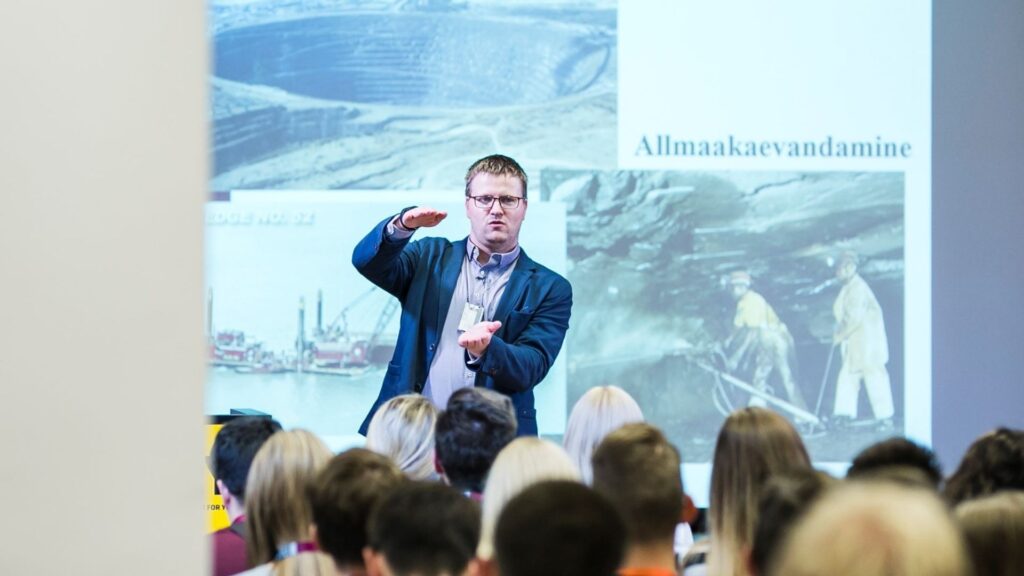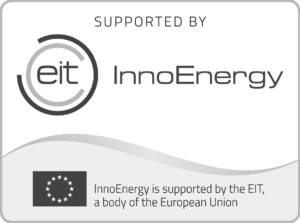27.09.2021
Demand for mined raw materials has skyrocketed, supply cannot keep pace

The standard of living and the green revolution are forcing researchers, politicians, and companies to look for solutions to secure the raw materials supply chain. Already, Europe is facing a supply crisis of mineral resources. While exploration of underground resources and finding new deposits continues, people also need to be more aware of the circular economy.
Veiko Karu, Head of the Mineral Resources and Applied Geology Division at the TalTech Geology Department, recommends everyone look around their home to understand how many mined resources we use in our everyday lives. “Almost every home has a refrigerator, stove, oven, coffee machine, kettle, washing machine, TV, smartphone, etc.,” Karu lists the technical equipment people use daily. In addition, we have clothing and footwear, sporting goods, vehicles from the bike to the car, furniture, laundry supplies. “A lot of these items are made from mined raw materials, mostly from a specific metal or an alloy,” Karu points out. “And if this item or device happens to be smart, it also contains a variety of rare earth that we can only find in a few places on Earth: tungsten, cobalt, and other materials needed to produce chips and smart devices.”
The Head of the Applied Geology division points out that on top of this, raw materials are also needed to build our homes and build equipment that generates electricity and heat. These can also be rare or subject to critical procurement situations.
30 critical elements of raw material
Speaking of critical mineral resources, Veiko Karu confirms that we need to look at the bigger picture, where supply and demand cannot keep pace. “Developed countries are hugely interested in modern green technologies, which, for example, allow the production of CO2-free electricity. As a result, the demand has skyrocketed. At the same time, the production is unable to keep up because the mineral resources needed to produce the equipment in question are not located in Europe, but elsewhere in the world: in Africa, Asia, South America,” Karu adds, underlining the challenges related to procuring resources from these regions. That is why the European Union is constantly monitoring the demand and availability of raw materials – 30 elements are currently on the special ‘critical list,’ meaning that a lot of effort has to go into ensuring the functioning of their supply chains.
According to Karu, the research of European crustal resources is facing increasing challenges. “We are going deeper and deeper into Earth’s crust in search of new deposits. Residual deposits at existing mining sites are also constantly surveyed to obtain the necessary elements through additional processing.” The discovery, exploration, and registration of new deposits is a time-consuming process, whereas the demand for battery materials, for example, is increasing quickly. “Therefore, we are witnessing the emergence of gaps in supply security – new deposits cannot be registered and mining plans made quickly enough,” Karu admits.
The complete value chain
So, in addition to finding new mining opportunities, the circular economy of raw materials must be put in place, and the complete chain of raw materials must be established. “A complete value chain means that if an important mineral raw material has already been brought out of Earth’s crust, it will remain in circulation and will not end up in a landfill,” Veiko Karu explains. He gives a practical example: “For example, mined gold was processed to end up on your desktop computer’s motherboard, the computer went through its lifecycle and, after several repairs, was recycled, which meant that it was divided into metallic and non-metallic parts. The metallic part was processed in a way that put the gold on a microchip in a Tesla car bought by your neighbor for his wife’s birthday. Should the Tesla be recycled at one point, that same gold could end up in the next person’s refrigerator electronics and so on.” According to Karu, Estonia still has a long way to go. “Gradually, new companies are emerging that mediate information about surplus materials that could potentially be raw material for others. One such platform is called Materjalivoog.”
It is equally important that every individual contribute. “The main problem with the recycling of mineral resources is people’s awareness,” Karu emphasizes. “If the best a person can do is just throw unneeded or broken goods in the trash without thinking twice, we still have a lot of ground to cover. Local governments handle waste management, but there is definitely a need to inform the public better on what to take where, and how to sort the waste in advance at home.”
Mineral raw materials through either recycling or mining
At the same time, product development must change to become more compatible with recycling. Veiko Karu knows companies whose products are almost 100% recyclable. He brings the example of Comodule’s e-scooter Tuul, which is 90% recyclable after the end of its five-year life.
Karu hopes that our social organization and technological capability might one day allow us to trace each product to the extent: we know where it was produced, how its materials were procured, whether the procurement of material and the production of the equipment have been fairly taxed, and whether the companies involved have a good track record of environmental and social responsibility. “This is exactly what TalTech Department of Geology and its international partners are working on in the projects Re-Sourcing and Sumex,” Karu confirms. The Department of Geology will also be represented at the international GreenEst Summit 2021 on October 27–28 in Tallinn, bringing together experts in the field with discussions focusing on raw materials, their recycling, and the value chain.
“To avoid mineral raw material crisis, we must individually and collectively agree and understand that we need mineral resources to maintain and improve living standards, and we only get them through recycling or mining.”












